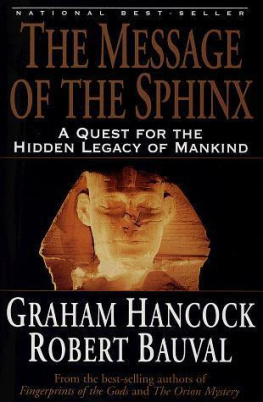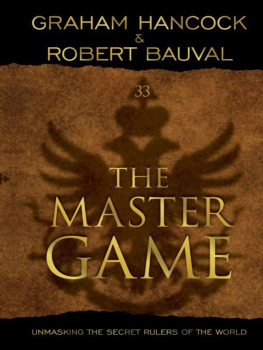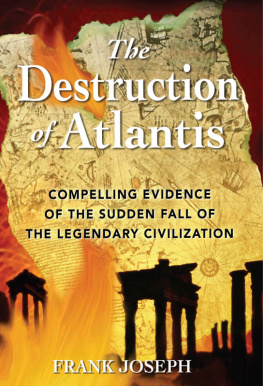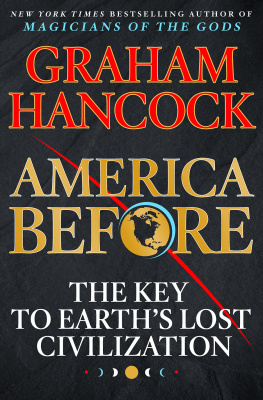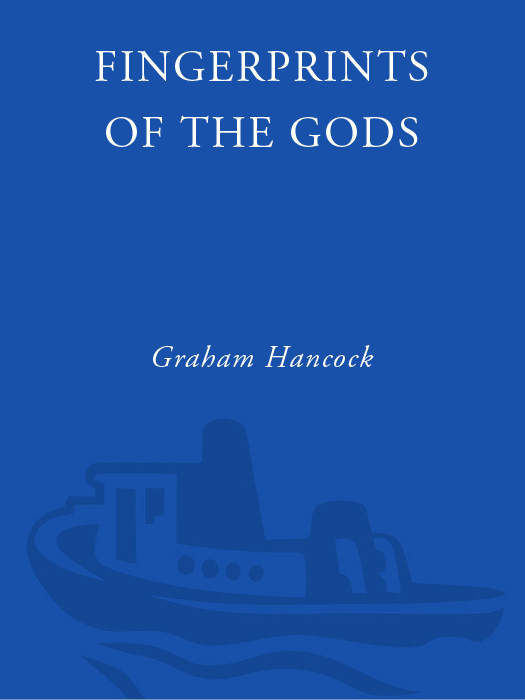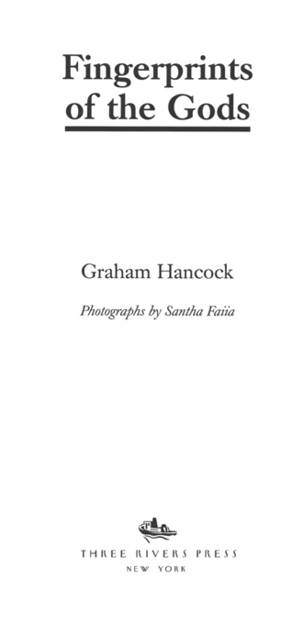Also by Graham Hancock
Journey Through Pakistan
Ethiopia: The Challenge of Hunger
AIDS: The Deadly Epidemic
Lords of Poverty
African Ark: Peoples of the Horn
The Sign and the Seal: A Quest for the Lost Ark of the Covenant
The Message of the Sphinx (with Robert Bauval)
Copyright 1995 by Graham Hancock
All rights reserved. No part of this book may be reproduced or transmitted in any form or by any means, electronic or mechanical, including photocopying, recording, or by any information storage and retrieval system, without permission in writing from the publisher.
Published by Three Rivers Press, New York, New York.
Member of the Crown Publishing Group.
Random House, Inc. New York, Toronto, London, Sydney, Auckland www.randomhouse.com
THREE RIVERS PRESS is a registered trademark and the Three Rivers Press colophon is a trademark of Random House, Inc.
Originally published in Great Britain by William Heinemann, Ltd.,
an imprint of Reed Consumer Books Ltd., in 1995.
First American hardcover edition published by
Crown Publishers, in 1995.
Line illustrations by R. J. Cook
Library of Congress Cataloging-in-Publication Data
Hancock, Graham.
Fingerprints of the gods / by Graham Hancock1st American ed.
Includes index.
1. Lost continents. 2. Civilization, Ancient. 3. AntarcticaDiscovery
and exploration. 4. World mapsTo 1800. I . Title.
GH751.H293 1995 930dc20 95-6964
eISBN: 978-0-307-82905-4
v3.1
For Santha. for being there.
With all my love.
Contents
Acknowledgements
Fingerprints of the Gods could not have been written without the generous, warm-hearted and sustaining love of my partner Santha Faiia who always gives more than she takes and who enriches the lives of everyone around her with creativity, kindness and imagination. All the photographs in the book are her work.
I am also grateful for the support and encouragement of our six children Gabrielle, Leila, Luke, Ravi, Sean and Shanti each one of whom I feel privileged to know.
My parents, Donald and Muriel Hancock, have been incredibly helpful, active and involved through this and many other difficult times and projects. Together with my uncle James Macaulay they have also patiently read the drafts of the evolving manuscript, offering a wealth of positive suggestions. Thanks, too, to my oldest and closest friend, Peter Marshall, with whom I have weathered many storms, and to Rob Gardner, Joseph and Sherry Jahoda, Roel Oostra, Joseph and Laura Schor, Niven Sinclair, Colin Skinner and Clem Vallance, all of whom gave me good advice.
In 1992 I suddenly found that I had a friend in Lansing, Michigan. His name is Ed Ponist and he got in touch with me soon after the publication of my previous book, The Sign and the Seal. Like a guardian angel he volunteered to devote a hefty chunk of his spare time to helping me out in the US with research, contacts and the collection of documentary resources of relevance to Fingerprints of the Gods. He did a brilliant job, always sending me the right books just when I needed them and finding references that I didnt even know existed. He was also an acurate weathervane on the quality of my work, whose judgement I quickly learned to trust and respect. Last but not least, when Santha and I went to Arizona, to the Hopi Nation, it was Ed who came with us and who opened the way
Eds initial letter was part of an overwhelming deluge of mail that I received from around the world after writing The Sign and the Seal. For a while I tried to answer all the letters individually. Eventually, however, I got swamped with the new work on Fingerprints and had to stop replying. I feel bad about this, and would like to take this opportunity to thank everybody who wrote to me and to whom I did not write back. Im intending to be more systematic in the future because I enormously value this correspondence and appreciate the high-quality information that it frequently turns out to contain
Other researchers who have helped me on Fingerprints of the Gods have been Martin Slavin, David Mestecky and Jonathan Derrick. In addition I would like to thank my Anglophone editors on both sides of the Atlantic, Tom Weldon at Heinemann, Jim Wade at Crown and John Pearce at Doubleday Canada, as well as my literary agents Bill Hamilton and Sara Fisher, for their continuing commitment, solidarity and wise counsel.
My warmest appreciation also to those co-researchers and colleagues who have become my friends during the course of this investigation: Robert Bauval in Britain (with whom I shall be co-authoring two future books on related subjects), Colin Wilson, John Anthony West and Lew Jenkins in the United States, Rand and Rose Flem-Ath and Paul William Roberts in Canada.
Finally I want to pay tribute to Ignatius Donnelly, Arthur Posnansky, R.A. Schwaller de Lubicz, Charles Hapgood and Giorgio de Santillana investigators who saw that something was badly wrong with the history of mankind, who had the courage to speak out against intellectual adversity, and who pioneered the momentous paradigm shift that is now irrevocably under way.
Part I
Introduction
The Mystery of the Maps
Chapter 1
A Map of Hidden Places
8 RECONNAISSANCE TECHNICAL SQUADRON (SAC)
UNITED STATES AIRFORCE
Westover Airforce Base
Massachusetts
6 July 1960
SUBJECT: Admiral Piri Reis World Map
To: Professor Charles H. Hapgood,
Keene College,
Keene, New Hampshire.
Dear Professor Hapgood,
Your request for evaluation of certain unusual features of the Piri Reis World Map of 1513 by this organization has been reviewed.
The claim that the lower part of the map portrays the Princess Martha Coast of Queen Maud Land Antarctica, and the Palmer Peninsula, is reasonable. We find this is the most logical and in all probability the correct interpretation of the map.
The geographical detail shown in the lower part of the map agrees very remarkably with the results of the seismic profile made across the top of the ice-cap by the Swedish-British Antarctic Expedition of 1949.
This indicates the coastline had been mapped before it was covered by the ice-cap.
The ice-cap in this region is now about a mile thick.
We have no idea how the data on this map can be reconciled with the supposed state of geographical knowledge in 1513.
HAROLD Z. OHLMEYER
Lt Colonel, USAF
Commander
is a bombshell. If Queen Maud Land was mapped before it was covered by ice, the original cartography must have been done an extraordinarily long time ago.
How long ago exactly?
Conventional wisdom has it that the Antarctic ice-cap, in its present extent and form, is millions of years old. On closer examination, this notion turns out to be seriously flawed so seriously that we need not assume the map drawn by Admiral Piri Reis depicts Queen Maud Land as it looked millions of years in the past. The best recent evidence suggests that Queen Maud Land, and the neighbouring regions shown on the map, passed through a long ice-free period which may not have come completely to an end until about six thousand years ago. This evidence, which we shall touch upon again in the next chapter, liberates us from the burdensome task of explaining who (or what) had the technology to undertake an accurate geographical survey of Antarctica in, say, two million BC, long before our own species came into existence. By the same token, since map-making is a complex and


